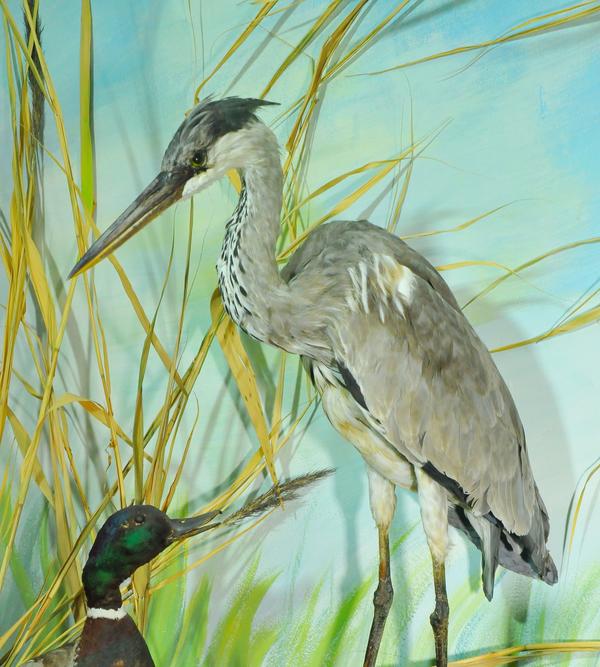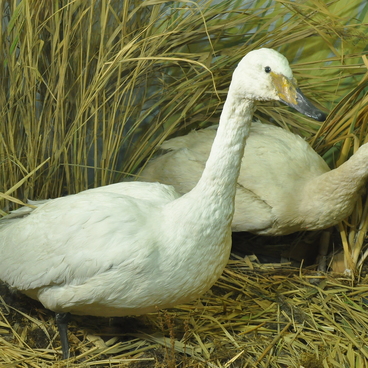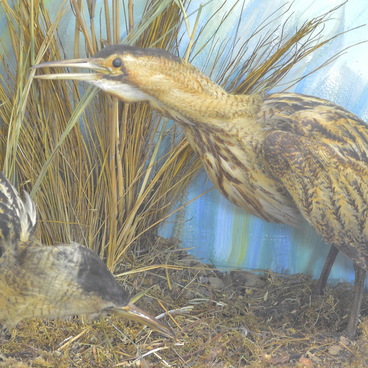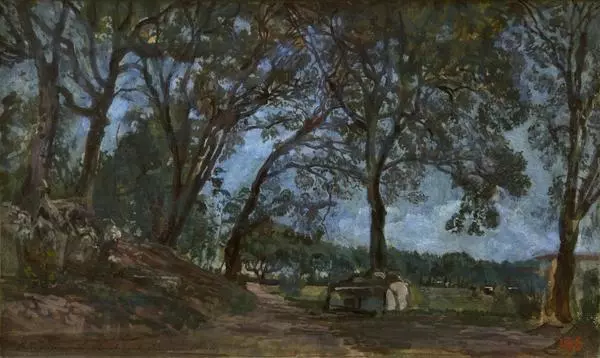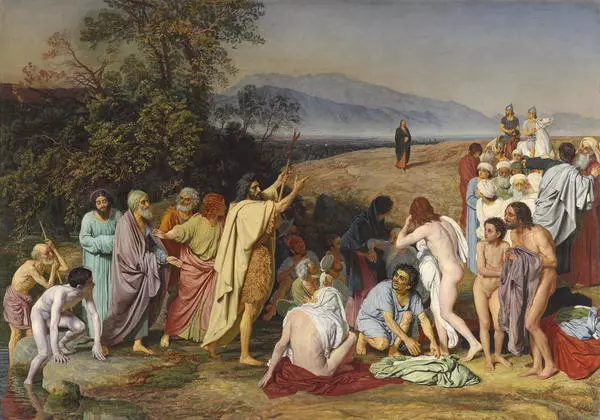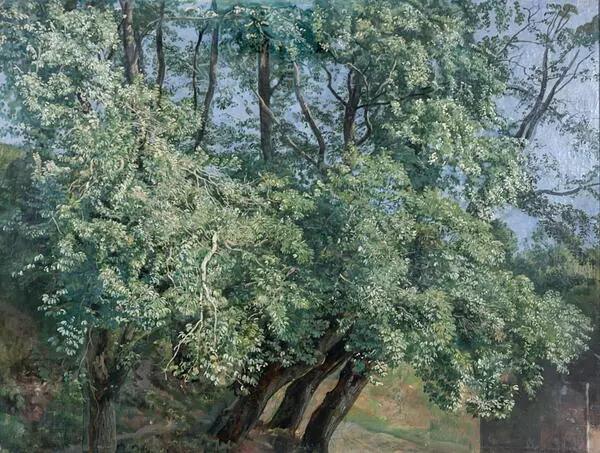The grey heron is classified into the order of Ciconiiformes. Its Latin name is Ardea cinerea. In many Slavic languages, the name of the bird is the same: in Ukrainian, it is chapla, in Polish - czapla, in – Slovak - caplija. All these words derive from the Common-Slavic chapat, which means ‘to grab, to shuffle, to trudge’.
Scientists believe that the bird could get the name from its clumsily trudging gait or hunting techniques. Evidently, the form with ch in the beginning takes precedence, while the modern Russian tsaplia was influenced by the Northern Russia’s tsokanje dialect. According to the Vladimir Dahl’s Explanatory Dictionary of the Living Great Russian Language, in the past the heron was also called tsaplia, chapia and chipura.
Heron is a large bird with a sharp beak, long legs and long neck. When hunting, it usually stands absolutely still in shallow water or slowly walks around. Then, with the blinding speed, the bird strikes down, catches the victim and swallows it whole. Sometimes the heron steals food from other birds of prey, such as cormorants or gulls. It lives by water bodies and therefore eats fish, shellfish or crustaceans. Its catch may include rodents, lizards, insects and snakes.
When it comes to breeding, herons may do it either separately or as a colony. The colony usually consists of 10-20 nests and about 200 birds, but in some areas, the number of birds may reach 1,000. A male begins building a nest and then summons a female. The couple look after their home, often returning to the same nest for several years in a row.
Herons may be often seen standing many hours with one foot retracted, which may have several explanations. For the bird, hunting may be a very time and energy consuming effort as it should be able to strike down within a blink of an eye, so it lifts one leg out of the water in advance to ensure a lightning-fast attack. It also helps to regulate the internal temperature so that to protect the bird from freezing in the chilling water.
Grey heron has been around for a very long time and therefore turned into a popular folklore and literature character. It takes a special place in the traditional Chinese art where heron appears as a good luck wish.
Scientists believe that the bird could get the name from its clumsily trudging gait or hunting techniques. Evidently, the form with ch in the beginning takes precedence, while the modern Russian tsaplia was influenced by the Northern Russia’s tsokanje dialect. According to the Vladimir Dahl’s Explanatory Dictionary of the Living Great Russian Language, in the past the heron was also called tsaplia, chapia and chipura.
Heron is a large bird with a sharp beak, long legs and long neck. When hunting, it usually stands absolutely still in shallow water or slowly walks around. Then, with the blinding speed, the bird strikes down, catches the victim and swallows it whole. Sometimes the heron steals food from other birds of prey, such as cormorants or gulls. It lives by water bodies and therefore eats fish, shellfish or crustaceans. Its catch may include rodents, lizards, insects and snakes.
When it comes to breeding, herons may do it either separately or as a colony. The colony usually consists of 10-20 nests and about 200 birds, but in some areas, the number of birds may reach 1,000. A male begins building a nest and then summons a female. The couple look after their home, often returning to the same nest for several years in a row.
Herons may be often seen standing many hours with one foot retracted, which may have several explanations. For the bird, hunting may be a very time and energy consuming effort as it should be able to strike down within a blink of an eye, so it lifts one leg out of the water in advance to ensure a lightning-fast attack. It also helps to regulate the internal temperature so that to protect the bird from freezing in the chilling water.
Grey heron has been around for a very long time and therefore turned into a popular folklore and literature character. It takes a special place in the traditional Chinese art where heron appears as a good luck wish.
